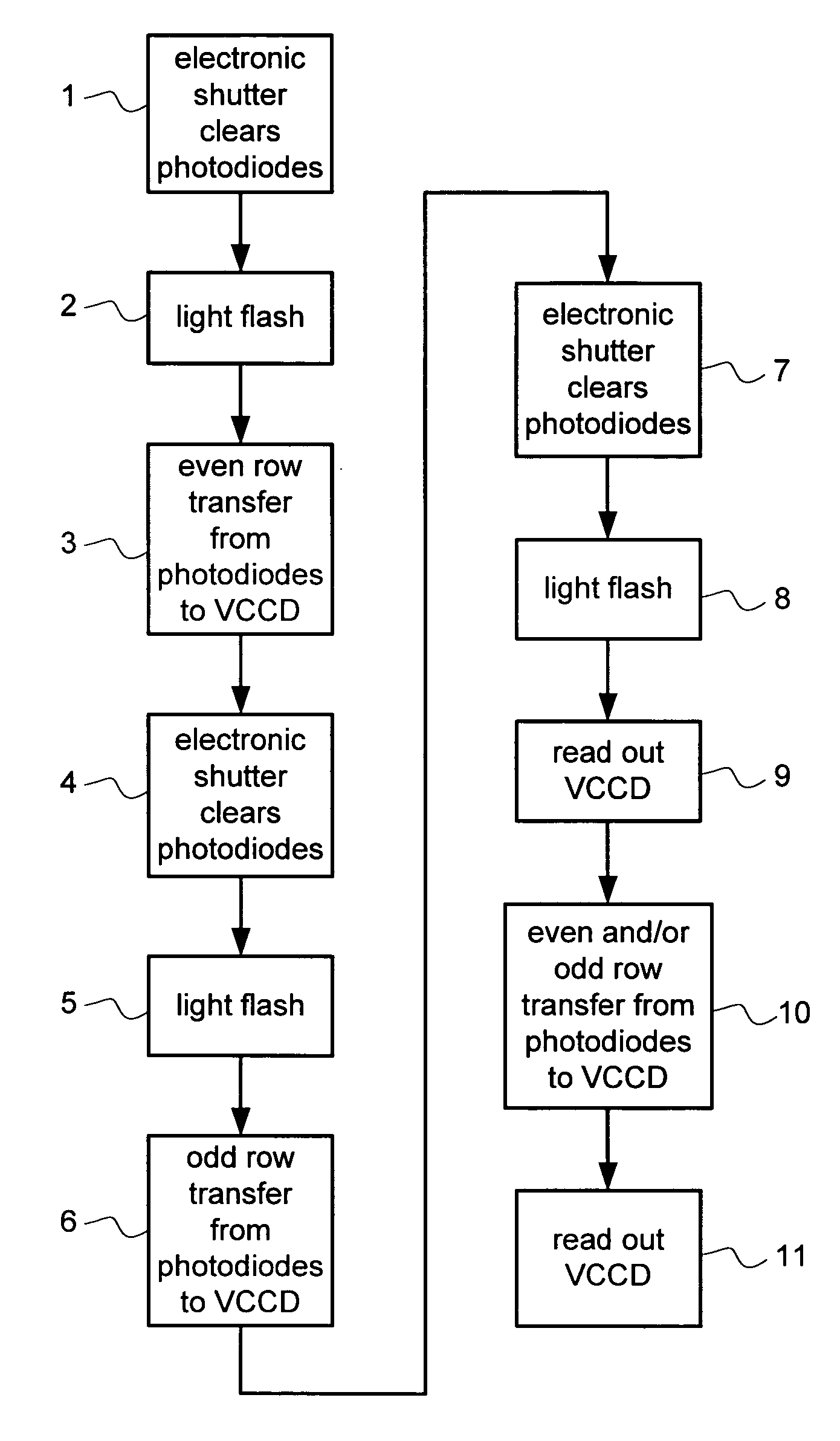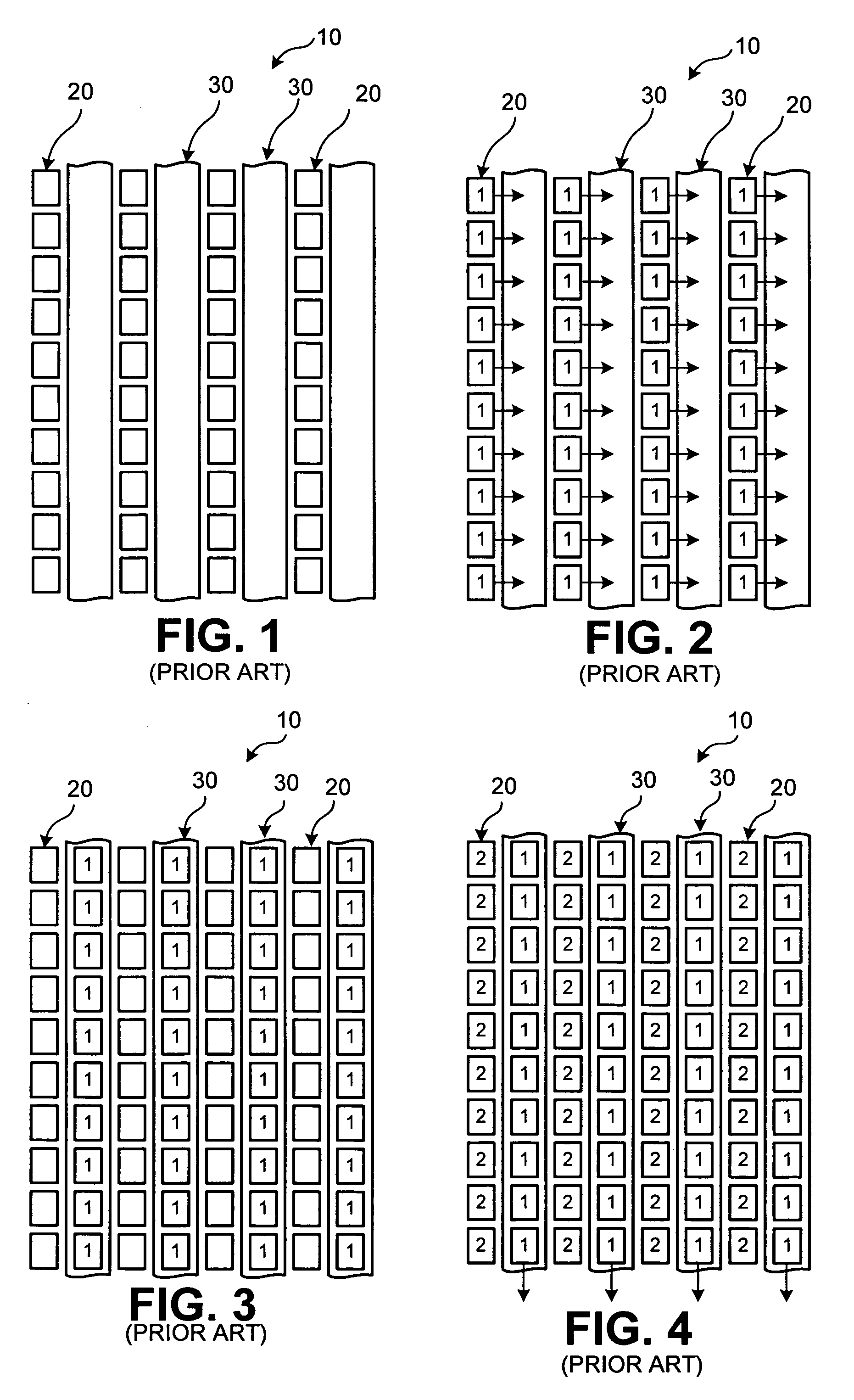Method for capturing a sequence of images in close succession
a sequence and image technology, applied in the field of image sensors, can solve the problems of two images being captured in rapid sequence, one disadvantage of the image capture sequence outlined in figs
- Summary
- Abstract
- Description
- Claims
- Application Information
AI Technical Summary
Benefits of technology
Problems solved by technology
Method used
Image
Examples
Embodiment Construction
[0019]Referring to FIG. 7, there is shown a digital camera 50 for capturing images according to the present invention. The camera 50 includes an image sensor 51 that receives incident light that is converted into charge packets representing the captured scene. The camera 50 also includes a flash 52 for providing illumination during image capture if such illumination is necessary.
[0020]Referring FIG. 8, there is shown a typical pixel 100 for the image sensor of the present invention of the charge-coupled device (CCD) type. In this regard, there is an n-type photodiode 102 with a p-type pinning layer 101 for capturing the image in the form of a charge packet and a transfer gate 104 that is electrically pulsed for transferring the charge packet into an adjacent vertical CCD 103. The vertical CCD 103 is then clocked for transferring the image data therefrom for further processing. The substrate 108 is pulsed at an appropriate level for clearing charge packets out of the photodiodes into...
PUM
 Login to View More
Login to View More Abstract
Description
Claims
Application Information
 Login to View More
Login to View More - R&D
- Intellectual Property
- Life Sciences
- Materials
- Tech Scout
- Unparalleled Data Quality
- Higher Quality Content
- 60% Fewer Hallucinations
Browse by: Latest US Patents, China's latest patents, Technical Efficacy Thesaurus, Application Domain, Technology Topic, Popular Technical Reports.
© 2025 PatSnap. All rights reserved.Legal|Privacy policy|Modern Slavery Act Transparency Statement|Sitemap|About US| Contact US: help@patsnap.com



